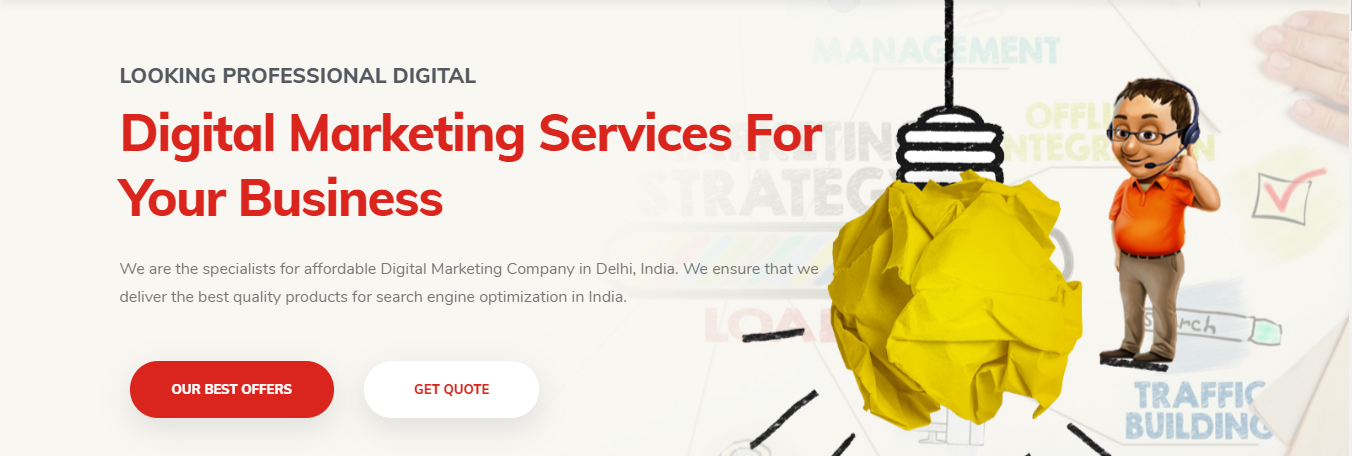

Our Digital Marketing Services List Includes:
Best Digital Marketing Services in India

Search Engine Optimization (SEO)
Search Engine Marketing (SEM)
Website Strategy
Integrated Online Marketing Strategies
Pay Per Click Advertising
Social Media Management
Social Media Marketing Campaigns
Email Outreach Programs
Onsite & Offsite Marketing
Re-targeting Efforts
Affiliate / Associate Programs
Content Generation and Optimization
Custom Collateral Design and Branding Elements
Quality Link Building
Local Specific Online Marketing
Lead Generation Companies
Google Ads Services
Display Advertising
Video Production Services
Apps Install Marketing
Website Ratings and Reviews
Online & Off Campaigns
eCommerce Products Ads
Google My Business Map
E-Mailer Designing
Landing Page Designing
Email Marketing Services
SMS Marketing Services
Whatsapp Marketing Services
Products & Services Page
eCommerce Marketing
eCommerce Solutions
eCommerce Google Ads
eCommerce SEO Services
Product Ratings and Reviews
Per Products SEO Services
Per Products Campaigns
Direct Product Sales Leads
India's #1 Digital Marketing Agency
Digital247™ offers a broad range of digital marketing services company in delhi including branding and strategy, web design and web development, search engine optimization (SEO Services), search engine marketing, email marketing, ecommerce website, wordpress website and etc services.
We are the specialists for affordable Digital Marketing Company in Delhi, India. We ensure that we deliver the best quality products for search engine optimization in India.
Digital 247™ is a ‘one stop digital services partner’ for all your requirements related to Digital Marketing Services Company Delhi, India. Our young passionate team of digital marketing enthusiasts comprising of specialists in insights and analytics, strategy and planning, search marketing, social media, content development, web design are always motivated to do world class work. having served 2100+ clients.
Digital247™ Group as one of the leading Digital Marketing Agency in located in delhi, mumbai, navi mumbai, thane, pune, bangalore, hyderabad, chandigarh, gurgaon, noida, greater noida, ghaziabad, faridabad, ahmedabad, surat, jaipur, india. USA, UK, Australia, UAE (Dubai) We create better customer experience by combining the use of technology, creativity, insights and analytical expertise to improve marketing of your products and services.
Digital marketing is the component of marketing that utilizes internet and online based digital technologies such as desktop computers, mobile phones and other digital media and platforms to promote products and services. Its development during the 1990s and 2000s, changed the way brands and businesses use technology for marketing.
As digital platforms became increasingly incorporated into marketing plans and everyday life, and as people increasingly use digital devices instead of visiting physical shops, digital marketing campaigns have become prevalent, employing combinations of search engine optimization (SEO), search engine marketing (SEM), content marketing, influencer marketing, content automation, campaign marketing, data-driven marketing, e-commerce marketing, social media marketing, social media optimization, e-mail direct marketing, display advertising, e–books, and optical disks and games have become commonplace.
Digital marketing extends to non-Internet channels that provide digital media, such as television, mobile phones (SMS and MMS), callback, and on-hold mobile ring tones. The extension to non-Internet channels differentiates digital marketing from online marketing.
When small businesses get started, their focus is often on how to get their first group of customers through the door. They may rely on traditional forms of advertising, such as print ads and coupon mailers or even big signs on the side of the road. They may trust that since they know they offer a good product or service, it’s only a matter of time until customers will find their way to them.
While this strategy may bring in a trickle of business, there is a better and easier way. Small businesses should consider the huge marketplace of prospects online. No small business, no matter how new, should overlook this vast marketplace.
The development of digital marketing is inseparable from technology development. One of the key points in the start of was in 1971, where Ray Tomlinson sent the very first email and his technology set the platform to allow people to send and receive files through different machines. However, the more recognisable period as being the start of Digital Marketing is 1990 as this was where the Archie search engine was created as an index for FTP sites. In the 1980s, the storage capacity of computer was already big enough to store huge volumes of customer information. Companies started choosing online techniques, such as database marketing, rather than limited list broker. These kinds of databases allowed companies to track customers’ information more effectively, thus transforming the relationship between buyer and seller. However, the manual process was not as efficient.
In the 1990s, the term Digital Marketing was first coined,. With the debut of server/client architecture and the popularity of personal computers, the Customer Relationship Management (CRM) applications became a significant factor in marketing technology. Fierce competition forced vendors to include more service into their software, for example, marketing, sales and service applications. Marketers were also able to own huge online customer data by eCRM software after the Internet was born. Companies could update the data of customer needs and obtain the priorities of their experience. This led to the first clickable banner ad being going live in 1994, which was the “You Will” campaign by AT&T and over the first four months of it going live, 44% of all people who saw it clicked on the ad.
In the 2000s, with increasing numbers of Internet users and the birth of iPhone, customers began searching products and making decisions about their needs online first, instead of consulting a salesperson, which created a new problem for the marketing department of a company. In addition, a survey in 2000 in the United Kingdom found that most retailers had not registered their own domain address. These problems encouraged marketers to find new ways to integrate digital technology into market development.
In 2007, marketing automation was developed as a response to the ever evolving marketing climate. Marketing automation is the process by which software is used to automate conventional marketing processes. Marketing automation helped companies segment customers, launch multichannel marketing campaigns, and provide personalized information for customers. However, the speed of its adaptability to consumer devices was not fast enough.
Digital marketing became more sophisticated in the 2000s and the 2010s, when the proliferation of devices’ capable of accessing digital media led to sudden growth. Statistics produced in 2012 and 2013 showed that digital marketing was still growing. With the development of social media in the 2000s, such as LinkedIn, Facebook, YouTube and Twitter, consumers became highly dependent on digital electronics in daily lives. Therefore, they expected a seamless user experience across different channels for searching product’s information. The change of customer behavior improved the diversification of marketing technology.
Digital marketing is also referred to as ‘online marketing’, ‘internet marketing’ or ‘web marketing’. The term digital marketing has grown in popularity over time. In the USA online marketing is still a popular term. In Italy, digital marketing is referred to as web marketing. Worldwide digital marketing has become the most common term, especially after the year 2013.
Digital media growth was estimated at 4.5 trillion online ads served annually with digital media spend at 48% growth in 2010. An increasing portion of advertising stems from businesses employing Online Behavioural Advertising (OBA) to tailor advertising for internet users, but OBA raises concern of consumer privacy and data protection.
To engage customers retailers have shifted from the linear marketing approach of one-way communication to a value exchange model of mutual dialogue and benefit-sharing between provider and consumer. Exchanges are more non-linear, free flowing, and both one-to-many or one-on-one. The spread of information and awareness can occur across numerous channels, such as the blogosphere, YouTube, Facebook, Instagram, Snapchat, Pinterest, and a variety of other platforms. Online communities and social networks allow individuals to easily create content and publicly publish their opinions, experiences, and thoughts and feelings about many topics and products, hyper-accelerating the diffusion of information.
The Nielsen Global Connected Commerce Survey conducted interviews in 26 countries to observe how consumers are using the Internet to make shopping decisions in stores and online. Online shoppers are increasingly looking to purchase internationally, with over 50% in the study who purchased online in the last six months stating they bought from an overseas retailer.
Using an omni-channel strategy is becoming increasingly important for enterprises who must adapt to the changing expectations of consumers who want ever-more sophisticated offerings throughout the purchasing journey. Omni-channel retailing involves analyzing consumer behavior from a broad perspective, and studying what influences buying habits. Retailers are increasingly focusing on their online presence, including online shops that operate alongside existing store-based outlets. The “endless aisle” within the retail space can lead consumers to purchase products online that fit their needs while retailers do not have to carry the inventory within the physical location of the store. Solely Internet-based retailers are also entering the market; some are establishing corresponding store-based outlets to provide personal services, professional help, and tangible experiences with their products.
An omni-channel approach not only benefits consumers but also benefits business bottom line: Research suggests that customers spend more than double when purchasing through an omni-channel retailer as opposed to a single-channel retailer, and are often more loyal. This could be due to the ease of purchase and the wider availability of products.
Customers are often researching online and then buying in stores and also browsing in stores and then searching for other options online. Online customer research into products is particularly popular for higher-priced items as well as consumable goods like groceries and makeup. Consumers are increasingly using the Internet to look up product information, compare prices, and search for deals and promotions.
There are a number of ways brands can use digital marketing to benefit their marketing efforts. The use of digital marketing in the digital era not only allows for brands to market their products and services, but also allows for online customer support through 24/7 services to make customers feel supported and valued. The use of social media interaction allows brands to receive both positive and negative feedback from their customers as well as determining what media platforms work well for them. As such, digital marketing has become an increased advantage for brands and businesses. It is now common for consumers to post feedback online through social media sources, blogs and websites on their experience with a product or brand. It has become increasingly popular for businesses to use and encourage these conversations through their social media channels to have direct contact with the customers and manage the feedback they receive appropriately.
Word of mouth communications and peer-to-peer dialogue often have a greater effect on customers, since they are not sent directly from the company and are therefore not planned. Customers are more likely to trust other customers’ experiences. Examples can be that social media users share food products and meal experiences highlighting certain brands and franchises. This was noted in a study on Instagram, where researchers observed that adolescent Instagram users’ posted images of food-related experiences within their social networks, providing free advertising for the products.
It is increasingly advantageous for companies to use social media platforms to connect with their customers and create these dialogues and discussions. The potential reach of social media is indicated by the fact that in 2015, each month the Facebook app had more than 126 million average unique users and YouTube had over 97 million average unique users.
Benefits of social media marketing
- Allows companies to promote themselves to large, diverse audiences that could not be reached through traditional marketing such as phone and email based advertising.
- Marketing on most social media platforms comes at little to no cost- making it accessible to virtually any size business.
- Accommodates personalized and direct marketing that targets specific demographics and markets.
- Companies can engage with customers directly, allowing them to obtain feedback and resolve issues almost immediately.
- Ideal environment for a company to conduct market research.
- Can be used as a means of obtaining information about competitors and boost competitive advantage.
- Social platforms can be used to promote brand events, deals, and news.
- Platforms can also be used to offer incentives in the form of loyalty points and discounts.
Ease of access
A key objective is engaging digital marketing customers and allowing them to interact with the brand through servicing and delivery of digital media. Information is easy to access at a fast rate through the use of digital communications. Users with access to the Internet can use many digital mediums, such as Facebook, YouTube, Forums, and Email etc. Through Digital communications it creates a multi-communication channel where information can be quickly shared around the world by anyone without any regard to who they are. Social segregation plays no part through social mediums due to lack of face to face communication and information being wide spread instead to a selective audience. This interactive nature allows consumers create conversation in which the targeted audience is able to ask questions about the brand and get familiar with it which traditional forms of Marketing may not offer.
Competitive advantage
By using Internet platforms, businesses can create competitive advantage through various means. To reach the maximum potential of digital marketing, firms use social media as its main tool to create a channel of information. Through this a business can create a system in which they are able to pinpoint behavioral patterns of clients and feedback on their needs. This means of content has shown to have a larger impingement on those who have a long-standing relationship with the firm and with consumers who are relatively active social media users. Relative to this, creating a social media page will further increase relation quality between new consumers and existing consumers as well as consistent brand reinforcement therefore improving brand awareness resulting in a possible rise for consumers up the Brand Awareness Pyramid. Although there may be inconstancy with product images; maintaining a successful social media presence requires a business to be consistent in interactions through creating a two way feed of information; firms consider their content based on the feedback received through this channel, this is a result of the environment being dynamic due to the global nature of the internet. Effective use of digital marketing can result in relatively lowered costs in relation to traditional means of marketing; Lowered external service costs, advertising costs, promotion costs, processing costs, interface design costs and control costs.
Effectiveness
Brand awareness has been proven to work with more effectiveness in countries that are high in uncertainty avoidance, also these countries that have uncertainty avoidance; social media marketing works effectively. Yet brands must be careful not to be excessive on the use of this type of marketing, as well as solely relying on it as it may have implications that could negatively harness their image. Brands that represent themselves in an anthropomorphize manner are more likely to succeed in situations where a brand is marketing to this demographic. “Since social media use can enhance the knowledge of the brand and thus decrease the uncertainty, it is possible that people with high uncertainty avoidance, such as the French, will particularly appreciate the high social media interaction with an anthropomorphize brand.” Moreover, digital platform provides an ease to the brand and its customers to interact directly and exchange their motives virtually.
One of the major changes that occurred in traditional marketing was the “emergence of digital marketing” (Patrutiu Baltes, Loredana, 2015), this led to the reinvention of marketing strategies in order to adapt to this major change in traditional marketing (Patrutiu Baltes, Loredana, 2015).
As digital marketing is dependent on technology which is ever-evolving and fast-changing, the same features should be expected from digital marketing developments and strategies. This portion is an attempt to qualify or segregate the notable highlights existing and being used as of press time.[when?]
Segmentation: More focus has been placed on segmentation within digital marketing, in order to target specific markets in both business-to-business and business-to-consumer sectors.
Influencer marketing: Important nodes are identified within related communities, known as influencers. This is becoming an important concept in digital targeting. Influencers allow brands to take advantage of social media and the large audiences available on many of these platforms. It is possible to reach influencers via paid advertising, such as Facebook Advertising or Google Adwords campaigns, or through sophisticated sCRM (social customer relationship management) software, such as SAP C4C, Microsoft Dynamics, Sage CRM and Salesforce CRM. Many universities now focus, at Masters level, on engagement strategies for influencers.
To summarize, Pull digital marketing is characterized by consumers actively seeking marketing content while Push digital marketing occurs when marketers send messages without that content being actively sought by the recipients.
Online behavioural advertising is the practice of collecting information about a user’s online activity over time, “on a particular device and across different, unrelated websites, in order to deliver advertisements tailored to that user’s interests and preferences. Such Advertisements are customized as per the user behavior and pattern.
Collaborative Environment: A collaborative environment can be set up between the organization, the technology service provider, and the digital agencies to optimize effort, resource sharing, reusability and communications. Additionally, organizations are inviting their customers to help them better understand how to service them. This source of data is called User Generated Content. Much of this is acquired via company websites where the organization invites people to share ideas that are then evaluated by other users of the site. The most popular ideas are evaluated and implemented in some form. Using this method of acquiring data and developing new products can foster the organizations relationship with their customer as well as spawn ideas that would otherwise be overlooked. UGC is low-cost advertising as it is directly from the consumers and can save advertising costs for the organisation.
Data-driven advertising: Users generate a lot of data in every step they take on the path of customer journey and brands can now use that data to activate their known audience with data-driven programmatic media buying. Without exposing customers’ privacy, users’ data can be collected from digital channels (e.g.: when customer visits a website, reads an e-mail, or launches and interact with brand’s mobile app), brands can also collect data from real world customer interactions, such as brick and mortar stores visits and from CRM and sales engines datasets. Also known as people-based marketing or addressable media, data-driven advertising is empowering brands to find their loyal customers in their audience and deliver in real time a much more personal communication, highly relevant to each customers’ moment and actions.
An important consideration today while deciding on a strategy is that the digital tools have democratized the promotional landscape.
Remarketing: Remarketing plays a major role in digital marketing. This tactic allows marketers to publish targeted ads in front of an interest category or a defined audience, generally called searchers in web speak, they have either searched for particular products or services or visited a website for some purpose.
Game advertising: Game ads are advertisements that exist within computer or video games. One of the most common examples of in-game advertising is billboards appearing in sports games. In-game ads also might appear as brand-name products like guns, cars, or clothing that exist as gaming status symbols.
The new digital era has enabled brands to selectively target their customers that may potentially be interested in their brand or based on previous browsing interests. Businesses can now use social media to select the age range, location, gender and interests of whom they would like their targeted post to be seen by. Furthermore, based on a customer’s recent search history they can be ‘followed’ on the internet so they see advertisements from similar brands, products and services, This allows businesses to target the specific customers that they know and feel will most benefit from their product or service, something that had limited capabilities up until the digital era.
Digital marketing activity is still growing across the world according to the headline global marketing index. A study published in September 2018, found that global outlays on digital marketing tactics are approaching $100 billion. Digital media continues to rapidly grow; while the marketing budgets are expanding, traditional media is declining (World Economics, 2015). Digital media helps brands reach consumers to engage with their product or service in a personalised way. Five areas, which are outlined as current industry practices that are often ineffective are prioritizing clicks, balancing search and display, understanding mobiles, targeting, viewability, brand safety and invalid traffic, and cross-platform measurement (Whiteside, 2016). Why these practices are ineffective and some ways around making these aspects effective are discussed surrounding the following points.
Prioritizing clicks
Prioritizing clicks refers to display click ads, although advantageous by being ‘simple, fast and inexpensive’ rates for display ads in 2016 is only 0.10 percent in the United States. This means one in a thousand click ads are relevant therefore having little effect. This displays that marketing companies should not just use click ads to evaluate the effectiveness of display advertisements (Whiteside, 2016).
Balancing search and display
Balancing search and display for digital display ads are important; marketers tend to look at the last search and attribute all of the effectiveness to this. This, in turn, disregards other marketing efforts, which establish brand value within the consumers mind. ComScore determined through drawing on data online, produced by over one hundred multichannel retailers that digital display marketing poses strengths when compared with or positioned alongside, paid search (Whiteside, 2016). This is why it is advised that when someone clicks on a display ad the company opens a landing page, not its home page. A landing page typically has something to draw the customer in to search beyond this page. Things such as free offers that the consumer can obtain through giving the company contact information so that they can use retargeting communication strategies (Square2Marketing, 2012). Commonly marketers see increased sales among people exposed to a search ad. But the fact of how many people you can reach with a display campaign compared to a search campaign should be considered. Multichannel retailers have an increased reach if the display is considered in synergy with search campaigns. Overall both search and display aspects are valued as display campaigns build awareness for the brand so that more people are likely to click on these digital ads when running a search campaign (Whiteside, 2016).
Understanding Mobiles: Understanding mobile devices is a significant aspect of digital marketing because smartphones and tablets are now responsible for 64% of the time US consumers are online (Whiteside, 2016). Apps provide a big opportunity as well as challenge for the marketers because firstly the app needs to be downloaded and secondly the person needs to actually use it. This may be difficult as ‘half the time spent on smartphone apps occurs on the individuals single most used app, and almost 85% of their time on the top four rated apps’ (Whiteside, 2016). Mobile advertising can assist in achieving a variety of commercial objectives and it is effective due to taking over the entire screen, and voice or status is likely to be considered highly; although the message must not be seen or thought of as intrusive (Whiteside, 2016). Disadvantages of digital media used on mobile devices also include limited creative capabilities, and reach. Although there are many positive aspects including the users entitlement to select product information, digital media creating a flexible message platform and there is potential for direct selling (Belch & Belch, 2012).
Cross-platform measurement: The number of marketing channels continues to expand, as measurement practices are growing in complexity. A cross-platform view must be used to unify audience measurement and media planning. Market researchers need to understand how the Omni-channel affects consumer’s behaviour, although when advertisements are on a consumer’s device this does not get measured. Significant aspects to cross-platform measurement involves deduplication and understanding that you have reached an incremental level with another platform, rather than delivering more impressions against people that have previously been reached (Whiteside, 2016). An example is ‘ESPN and comScore partnered on Project Blueprint discovering the sports broadcaster achieved a 21% increase in unduplicated daily reach thanks to digital advertising’ (Whiteside, 2016). Television and radio industries are the electronic media, which competes with digital and other technological advertising. Yet television advertising is not directly competing with online digital advertising due to being able to cross platform with digital technology. Radio also gains power through cross platforms, in online streaming content. Television and radio continue to persuade and affect the audience, across multiple platforms (Fill, Hughes, & De Franceso, 2013).
Targeting, viewability, brand safety and invalid traffic: Targeting, viewability, brand safety and invalid traffic all are aspects used by marketers to help advocate digital advertising. Cookies are a form of digital advertising, which are tracking tools within desktop devices; causing difficulty, with shortcomings including deletion by web browsers, the inability to sort between multiple users of a device, inaccurate estimates for unique visitors, overstating reach, understanding frequency, problems with ad servers, which cannot distinguish between when cookies have been deleted and when consumers have not previously been exposed to an ad. Due to the inaccuracies influenced by cookies, demographics in the target market are low and vary (Whiteside, 2016). Another element, which is affected within digital marketing, is ‘viewabilty’ or whether the ad was actually seen by the consumer. Many ads are not seen by a consumer and may never reach the right demographic segment. Brand safety is another issue of whether or not the ad was produced in the context of being unethical or having offensive content. Recognizing fraud when an ad is exposed is another challenge marketers face. This relates to invalid traffic as premium sites are more effective at detecting fraudulent traffic, although non-premium sites are more so the problem (Whiteside, 2016).
Digital Marketing Channels are systems based on the Internet that can create, accelerate, and transmit product value from producer to a consumer terminal, through digital networks. Digital marketing is facilitated by multiple Digital Marketing channels, As an advertiser one’s core objective is to find channels which result in maximum two-way communication and a better overall ROI for the brand. There are multiple digital marketing channels available namely.
- Affiliate marketing – Affiliate marketing is perceived to not be considered a safe, reliable and easy means of marketing through online platform. This is due to a lack of reliability in terms of affiliates that can produce the demanded number of new customers. As a result of this risk and bad affiliates it leaves the brand prone to exploitation in terms of claiming commission that isn’t honestly acquired. Legal means may offer some protection against this, yet there are limitations in recovering any losses or investment. Despite this, affiliate marketing allows the brand to market towards smaller publishers, and websites with smaller traffic. Brands that choose to use this marketing often should beware of such risks involved and look to associate with affiliates in which rules are laid down between the parties involved to assure and minimize the risk involved.
- Display advertising – As the term implies, online display advertising deals with showcasing promotional messages or ideas to the consumer on the internet. This includes a wide range of advertisements like advertising blogs, networks, interstitial ads, contextual data, ads on the search engines, classified or dynamic advertisement etc. The method can target specific audience tuning in from different types of locals to view a particular advertisement, the variations can be found as the most productive element of this method.
- Email marketing – Email marketing in comparison to other forms of digital marketing is considered cheap; it is also a way to rapidly communicate a message such as their value proposition to existing or potential customers. Yet this channel of communication may be perceived by recipients to be bothersome and irritating especially to new or potential customers, therefore the success of email marketing is reliant on the language and visual appeal applied. In terms of visual appeal, there are indications that using graphics/visuals that are relevant to the message which is attempting to be sent, yet less visual graphics to be applied with initial emails are more effective in-turn creating a relatively personal feel to the email. In terms of language, the style is the main factor in determining how captivating the email is. Using casual tone invokes a warmer and gentle and inviting feel to the email in comparison to a formal style. For combinations; it’s suggested that to maximize effectiveness; using no graphics/visual alongside casual language. In contrast using no visual appeal and a formal language style is seen as the least effective method
- Search engine marketing – Search engine marketing (SEM) is a form of Internet marketing that involves the promotion of websites by increasing their visibility in search engine results pages (SERPs) primarily through paid advertising. SEM may incorporate Search engine optimization, which adjusts or rewrites website content and site architecture to achieve a higher ranking in search engine results pages to enhance pay per click (PPC) listings.
- Social Media Marketing – The term ‘Digital Marketing’ has a number of marketing facets as it supports different channels used in and among these, comes the Social Media. When we use social media channels ( Facebook, Twitter, Pinterest, Instagram, Google+, etc.) to market a product or service, the strategy is called Social Media Marketing. It is a procedure wherein strategies are made and executed to draw in traffic for a website or to gain attention of buyers over the web using different social media platforms.
- Social networking service – A social networking service is an online platform which people use to build social networks or social relations with other people who share similar personal or career interests, activities, backgrounds or real-life connections
- In-game advertising – In-Game advertising is defined as “inclusion of products or brands within a digital game. The game allows brands or products to place ads within their game, either in a subtle manner or in the form of an advertisement banner. There are many factors that exist in whether brands are successful in their advertising of their brand/product, these being: Type of game, technical platform, 3-D and 4-D technology, game genre, congruity of brand and game, prominence of advertising within the game. Individual factors consist of attitudes towards placement advertisements, game involvement, product involvement, flow or entertainment. The attitude towards the advertising also takes into account not only the message shown but also the attitude towards the game. Dependent of how enjoyable the game is will determine how the brand is perceived, meaning if the game isn’t very enjoyable the consumer may subconsciously have a negative attitude towards the brand/product being advertised. In terms of Integrated Marketing Communication “integration of advertising in digital games into the general advertising, communication, and marketing strategy of the firm is an important as it results in a more clarity about the brand/product and creates a larger overall effect.
- Online public relations
- Video advertising – This type of advertising in terms of digital/online means are advertisements that play on online videos e.g. YouTube videos. This type of marketing has seen an increase in popularity over time. Online Video Advertising usually consists of three types: Pre-Roll advertisements which play before the video is watched, Mid-Roll advertisements which play during the video, or Post-Roll advertisements which play after the video is watched. Post-roll advertisements were shown to have better brand recognition in relation to the other types, where-as “ad-context congruity/incongruity plays an important role in reinforcing ad memorability”. Due to selective attention from viewers, there is the likelihood that the message may not be received. The main advantage of video advertising is that it disrupts the viewing experience of the video and therefore there is a difficulty in attempting to avoid them. How a consumer interacts with online video advertising can come down to three stages: Pre attention, attention, and behavioural decision. These online advertisements give the brand/business options and choices. These consist of length, position, adjacent video content which all directly affect the effectiveness of the produced advertisement time, therefore manipulating these variables will yield different results. Length of the advertisement has shown to affect memorability where-as longer duration resulted in increased brand recognition. This type of advertising, due to its nature of interruption of the viewer, it is likely that the consumer may feel as if their experience is being interrupted or invaded, creating negative perception of the brand. These advertisements are also available to be shared by the viewers, adding to the attractiveness of this platform. Sharing these videos can be equated to the online version of word by mouth marketing, extending number of people reached. Sharing videos creates six different outcomes: these being “pleasure, affection, inclusion, escape, relaxation, and control”. As well, videos that have entertainment value are more likely to be shared, yet pleasure is the strongest motivator to pass videos on. Creating a ‘viral’ trend from mass amount of a brands advertisement can maximize the outcome of an online video advert whether it be positive or a negative outcome.
- Native Advertising – involves the placement of paid content that replicates the look, feel, and oftentimes, voice of a platform’s existing content. It is most effective when used on digital platforms like websites, newsletters, and social media. Can be somewhat controversial as some critics feel it intentionally deceives consumers.
- Content Marketing – an approach to marketing that focuses on gaining and retaining customers through offering helpful content to customers that improves the buying experience and creates brand awareness. A brand may use this approach to hold a customer’s attention with the goal of influencing potential purchase decisions.
- Sponsored Content – content created and paid for by a brand to promote a specific product or service.
- Inbound Marketing – a market strategy that involves using content as a means to attract customers to a brand or product. Requires extensive research into the behaviors, interests, and habits of the brand’s target market.
It is important for a firm to reach out to consumers and create a two-way communication model, as digital marketing allows consumers to give back feed back to the firm on a community based site or straight directly to the firm via email. Firms should seek this long term communication relationship by using multiple forms of channels and using promotional strategies related to their target consumer as well as word-of mouth marketing.
Planning
Digital marketing planning is a term used in marketing management. It describes the first stage of forming a digital marketing strategy for the wider digital marketing system. The difference between digital and traditional marketing planning is that it uses digitally based communication tools and technology such as Social, Web, Mobile, Scannable Surface. Nevertheless, both are aligned with the vision, the mission of the company and the overarching business strategy.
Stages of planning
Using Dr Dave Chaffey’s approach, the digital marketing planning (DMP) has three main stages: Opportunity, Strategy and Action. He suggests that any business looking to implement a successful digital marketing strategy must structure their plan by looking at opportunity, strategy and action. This generic strategic approach often has phases of situation review, goal setting, strategy formulation, resource allocation and monitoring.
1) Opportunity
To create an effective DMP, a business first needs to review the marketplace and set ‘SMART’ (Specific, Measurable, Actionable, Relevant and Time-Bound) objectives. They can set SMART objectives by reviewing the current benchmarks and key performance indicators (KPIs) of the company and competitors. It is pertinent that the analytics used for the KPIs be customised to the type, objectives, mission and vision of the company.
Companies can scan for marketing and sales opportunities by reviewing their own outreach as well as influencer outreach. This means they have competitive advantage because they are able to analyse their co-marketers influence and brand associations.
To cease opportunity, the firm should summarize their current customers’ personas and purchase journey from this they are able to deduce their digital marketing capability. This means they need to form a clear picture of where they are currently and how many resources they can allocate for their digital marketing strategy i.e. labour, time etc. By summarizing the purchase journey, they can also recognise gaps and growth for future marketing opportunities that will either meet objectives or propose new objectives and increase profit.
2) Strategy
To create a planned digital strategy, the company must review their digital proposition (what you are offering to consumers) and communicate it using digital customer targeting techniques. So, they must define online value proposition (OVP), this means the company must express clearly what they are offering customers online e.g. brand positioning.
The company should also (re)select target market segments and personas and define digital targeting approaches.
After doing this effectively, it is important to review the marketing mix for online options. The marketing mix comprises the 4Ps – Product, Price, Promotion and Place. Some academics have added three additional elements to the traditional 4Ps of marketing Process, Place and Physical appearance making it 7Ps of marketing.
3) Action
The third and final stage requires the firm to set a budget and management systems; these must be measurable touch points, such as audience reached across all digital platforms. Furthermore, marketers must ensure the budget and management systems are integrating the paid, owned and earned media of the company. The Action and final stage of planning also requires the company to set in place measurable content creation e.g. oral, visual or written online media.
After confirming the digital marketing plan, a scheduled format of digital communications (e.g. Gantt Chart) should be encoded throughout the internal operations of the company. This ensures that all platforms used fall in line and complement each other for the succeeding stages of digital marketing strategy.
Understanding the market
One way marketers can reach out to consumers, and understand their thought process is through what is called an empathy map. An empathy map is a four step process. The first step is through asking questions that the consumer would be thinking in their demographic. The second step is to describe the feelings that the consumer may be having. The third step is to think about what the consumer would say in their situation. The final step is to imagine what the consumer will try to do based on the other three steps. This map is so marketing teams can put themselves in their target demographics shoes. Web Analytics are also a very important way to understand consumers. They show the habits that people have online for each website. One particular form of these analytics is predictive analytics which helps marketers figure out what route consumers are on. This uses the information gathered from other analytics, and then creates different predictions of what people will do so that companies can strategize on what to do next, according to the peoples trends.
- Consumer behavior- the habits or attitudes of a consumer that influences the buying process of a product or service. Consumer behavior impacts virtually every stage of the buying process specifically in relation to digital environments and devices.
- Predictive analytics- a form of data mining that involves utilizing existing data to predict potential future trends or behaviors. Can assist companies in predicting future behavior of customers.
- Buyer persona- employing research of consumer behavior regarding habits like brand awareness and buying behavior to profile prospective customers. Establishing a buyer persona helps a company better understand their audience and their specific wants/needs.
- Marketing Strategy- strategic planning employed by a brand to determine potential positioning within a market as well as prospective target audience; involves two key elements: segmentation and positioning. By developing a marketing strategy, a company is able to better anticipate and plan for each step in the marketing and buying process.
The “sharing economy” refers to an economic pattern that aims to obtain a resource that is not fully utilized. Nowadays, the sharing economy has had an unimagined effect on many traditional elements including labor, industry, and distribution system.This effect is not negligible that some industries are obviously under threat. The sharing economy is influencing the traditional marketing channels by changing the nature of some specific concept including ownership, assets, and recruitment.
Digital marketing channels and traditional marketing channels are similar in function that the value of the product or service is passed from the original producer to the end user by a kind of supply chain. Digital Marketing channels, however, consist of internet systems that create, promote, and deliver products or services from producer to consumer through digital networks. Increasing changes to marketing channels has been a significant contributor to the expansion and growth of the sharing economy. Such changes to marketing channels has prompted unprecedented and historic growth. In addition to this typical approach, the built-in control, efficiency and low cost of digital marketing channels is an essential features in the application of sharing economy.
Digital marketing channels within the sharing economy are typically divided into three domains including, e-mail, social media, and search engine marketing or SEM.
- E-mail- a form of direct marketing characterized as being informative, promotional, and often a means of customer-relationship management. Organization can update the activity or promotion information to the user by subscribing the newsletter mail that happened in consuming. Success is reliant upon a company’s ability to access contact information from its past, present, and future clientele.
- Social Media- Social media has the capability to reach a larger audience in a shorter time frame than traditional marketing channels. This makes social media a powerful tool for consumer engagement and the dissemination of information.
- Search Engine Marketing or SEM- Requires a more specialized knowledge of the technology embedded in online platforms. This marketing strategy requires long-term commitment and dedication to the ongoing improvement of a company’s digital presence.
Other emerging digital marketing channels, particularly branded mobile apps, have excelled in the sharing economy. Branded mobile apps are created specifically to initiate engagement between customers and the company.This engagement is typically facilitated through entertainment, information, or market transaction.

Website Designing
If you are looking for a Website Designing Company a. We also provide website designing & development services at affordable costs

Web Development
Digital247 is a reputed web application development company in Delhi, offering all types of websites, web applications, and web portal with more
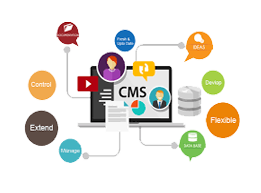
Dynamic Website
Creativity and team work are the two building blocks of Dynamic Website Designing. A good designing and designing is required to meet the target.
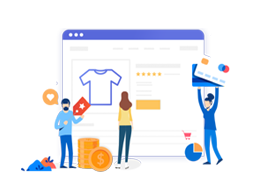
eCommerce Website
We are providing ready ecommerce store with Unlimited Features, Tested Bug Free Store, Video tutorial & Instruction Guide, 1 Year Technical Support
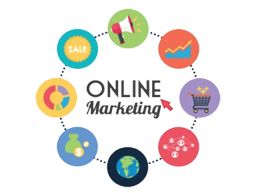
Digital Marketing
we offer a wide range of customized digital marketing services like SEO, SEM, PPC, digital marketing requirements for yielding the best business outcome.
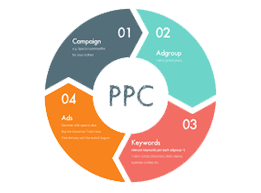
PPC Services
Reach your customers quickly and with precision with a data-driven PPC campaign. Our PPC Specialists are AdWords certified.

SEO Services
Through careful keyword research and white hat SEO practices, we can help you achieve higher organic rankings and increased visibility in search results.
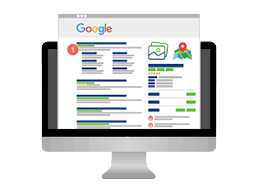
Google Adwords
Create your first ad in just a few steps “Advertising on Google has helped us grow our business, and it has allowed me to be able to do what I love.”
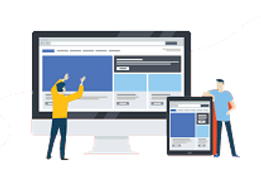
Web Hosting
Web hosting service is basically a space on the web where your websites lie. If you have a website, it needs to be on the web and this is exactly

Plesk Domain Hosting
plesk single domain linux hosting at very cheap cost with excellent support, backups and security. Best Plesk hosting plans are reliable cheap hosting
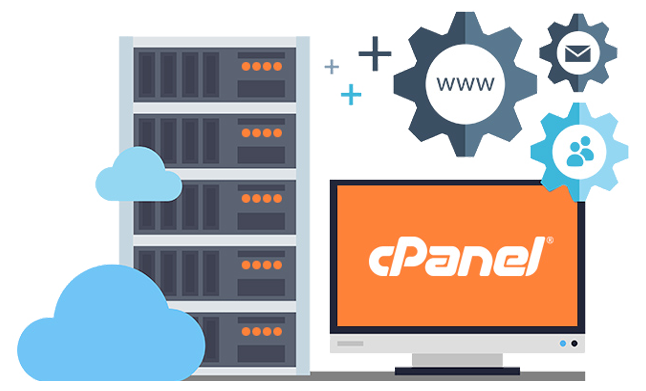
cPanel Linux Hosting
cPanel hosting plans are reliable cheap Single Domain cPanel Linux Hosting under shared hosting plan excellent support, backups and security.

SSL Certificate
Where to buy SSL Certificates India? Digital247 Top and Best SSL Provider at Cheap Price in India. Best worldwide SSL You can buy SSL Certificate


